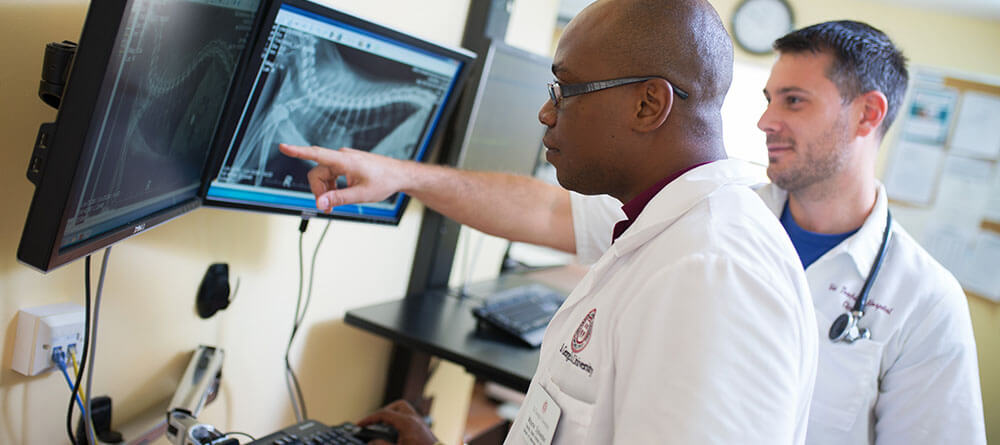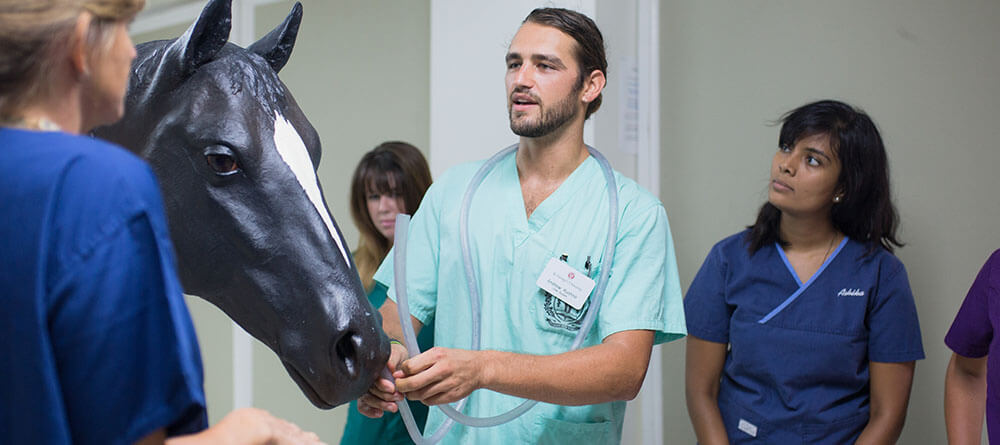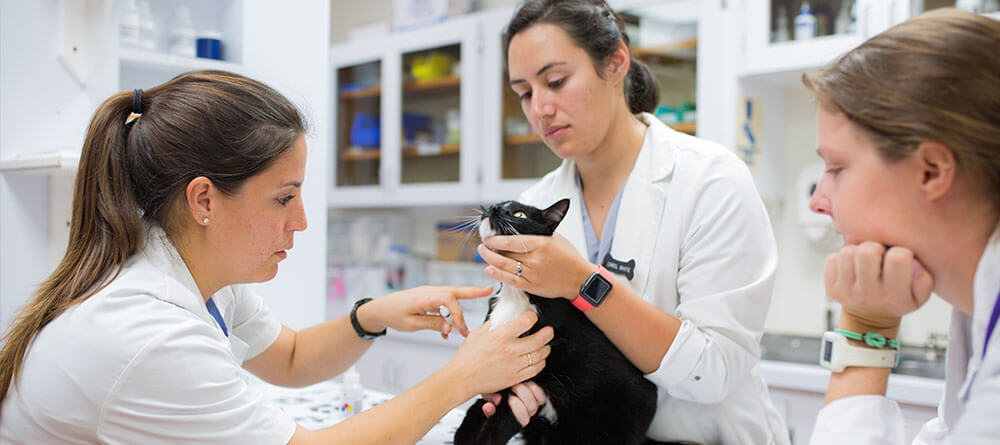The process of choosing a veterinary school can be both exciting and complicated. You want to set yourself up for success, and that means finding a Doctor of Veterinary Medicine (DVM) program that has solid graduate outcomes, offers ample support for students, and is equipped with quality facilities.
As you research more about international vet schools, you’ll find there are reputable options that offer many of the same sought-after criteria as the veterinary schools you’ve considered stateside. But you might still have some hesitations as the application process nears—you could have lingering questions, or you may have even heard some unfounded Caribbean vet school myths.
The truth is, the idea of attending a vet school so far away can be intimidating if you don’t know what to expect. That’s why we’ve compiled a list of four notable features of Caribbean vet schools. By doing some research in these areas, you just may find what you’re looking for in a DVM program.

4 Surprising facts about Caribbean vet schools
As you look for information about going to vet school in the Caribbean, we’re here to help provide the insights you’re looking for. We enlisted Dr. Neil Olson, dean of the School of Veterinary Medicine at St. George’s University (SGU), to help us analyze four important components.
1. The standards of education mirror those at stateside schools
Some pre-vet students are wary of enrolling at a vet school in the Caribbean for fear that they’ll be receiving a subpar education. As long as you’re looking at programs that have been accredited by the American Veterinary Medical Association (AVMA) Council on Education, you can be confident in the quality of education you’ll receive. Accreditation signifies that a school has been monitored, reviewed, and deemed effective in reaching the standards set by the AVMA for DVM programs.
“That is the gold standard worldwide,” Dr. Olson says, explaining that SGU and other accredited Caribbean vet schools meet the same core benchmarks as any veterinary school in the US.
There is an official list of DVM program criteria needed to meet to maintain AVMA accreditation. One condition is that at least 80 percent of a veterinary school’s students must pass the North American Veterinary Licensing Examination (NAVLE) at the time of graduation for that program to retain its accreditation status. SGU, for example, boasts a 91 percent NAVLE pass rate over the last five years.1 Measures like these ensure that standards for education are continually being met.
Learn more about the SGU Doctor of Veterinary Medicine accreditation status.

2. Admission to Caribbean vet schools can be competitive
While it is true that Caribbean vet schools tend to see higher acceptance rates than stateside schools, these programs maintain similar admission standards. Most DVM programs, including those in the US and Canada, are moving toward a more holistic approach to reviewing applicants.
Elements like your GPA and GRE score still weigh in on an admission committee’s decision, but they’ve also begun looking more closely at non-academic factors like animal experience and leadership skills.
When it all comes down to it, Caribbean vet schools are still quite selective and look for many similar prerequisites and requirements as other DVM programs. “We carefully evaluate all applicants to ensure they’ve shown the aptitude to be successful in the program,” Dr. Olson notes in reference to SGU’s School of Veterinary Medicine.
3. Students have multiple avenues for support
Attending a school far from home can be exciting, but it can also leave you wondering where you’ll turn if you run into any potential challenges. The prospect of getting lost in the sea of students at a Caribbean vet school can leave many with a fear of being left to flounder with little support when struggling.
Quality DVM programs – regardless of the location – will offer a variety of student resources to support those who may be facing challenges with academics, mental health, career prospects and more. If you’re considering Caribbean vet schools, it’s wise to inquire about what types of support students have access to.

4. Caribbean vet students are eligible to work in the US
Most veterinary students attend international programs with the intention of returning closer to home when it comes time to launch their careers. One prominent myth about attending vet school in the Caribbean is that you’ll eventually run into trouble when it comes time to look for a job in the US.
It’s true that those who receive their education from a non-accredited program will face additional hurdles when it comes to practicing in the US. They’ll either need to complete the Program for the Assessment of Veterinary Education Equivalence (PAVE) or obtain certification from the Educational Commission for Foreign Veterinary Graduates (ECFVG). Both pathways require additional tests and fees.
Students who obtain their DVM from an AVME-accredited Caribbean vet program follow the same procedures as any US veterinary student. SGU students, for example, will complete their final year of veterinary school at an AVMA-accredited, affiliated clinical university.
Start your journey in veterinary medicine
If you’re not familiar with the inner workings of Caribbean vet schools, the idea of attending an overseas DVM program can seem daunting. But now that you’ve learned more about what reputable schools have to offer, you can take the next step in evaluating your options.
If St. George’s University is on your list of potential schools and you’re curious to learn more about the veterinary programs, check out are article, “10 Things You May Not Know About the SGU School of Veterinary Medicine.”
1According to International Council of Veterinary Assessment Reports, 2017 – 2021.
*This article was originally published in 2019. It has since been updated to include more relevant information.

